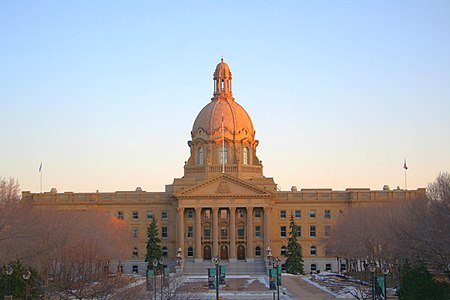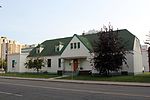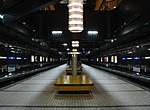Alberta Legislature Building
1913 establishments in AlbertaAlberta LegislatureAlberta government buildingsBeaux-Arts architecture in CanadaBuildings and structures in Edmonton ... and 8 more
Government buildings completed in 1913Government buildings with domesLegislative buildings in CanadaPages with non-numeric formatnum argumentsProvincial Historic Resources in EdmontonProvincial symbols of AlbertaTerminating vistas in CanadaTourist attractions in Edmonton

The Alberta Legislature Building is located in Edmonton and is the meeting place of the Legislative Assembly of Alberta and the Executive Council of Alberta. It is often shortened to "the Ledge".The Alberta Legislature Building is located at 10801 97 Avenue NW. Free tours of the facility are offered throughout the week. The building is also connected via underground walkway to the Government Centre station and Government Centre Transit Centre.
Excerpt from the Wikipedia article Alberta Legislature Building (License: CC BY-SA 3.0, Authors, Images).Alberta Legislature Building
97 Avenue NW, Edmonton Central Core
Geographical coordinates (GPS) Address Phone number Website External links Nearby Places Show on map
Geographical coordinates (GPS)
| Latitude | Longitude |
|---|---|
| N 53.533694444444 ° | E -113.50661111111 ° |
Address
Alberta Legislature Building
97 Avenue NW 10800
T5K 2B6 Edmonton, Central Core
Alberta, Canada
Open on Google Maps







